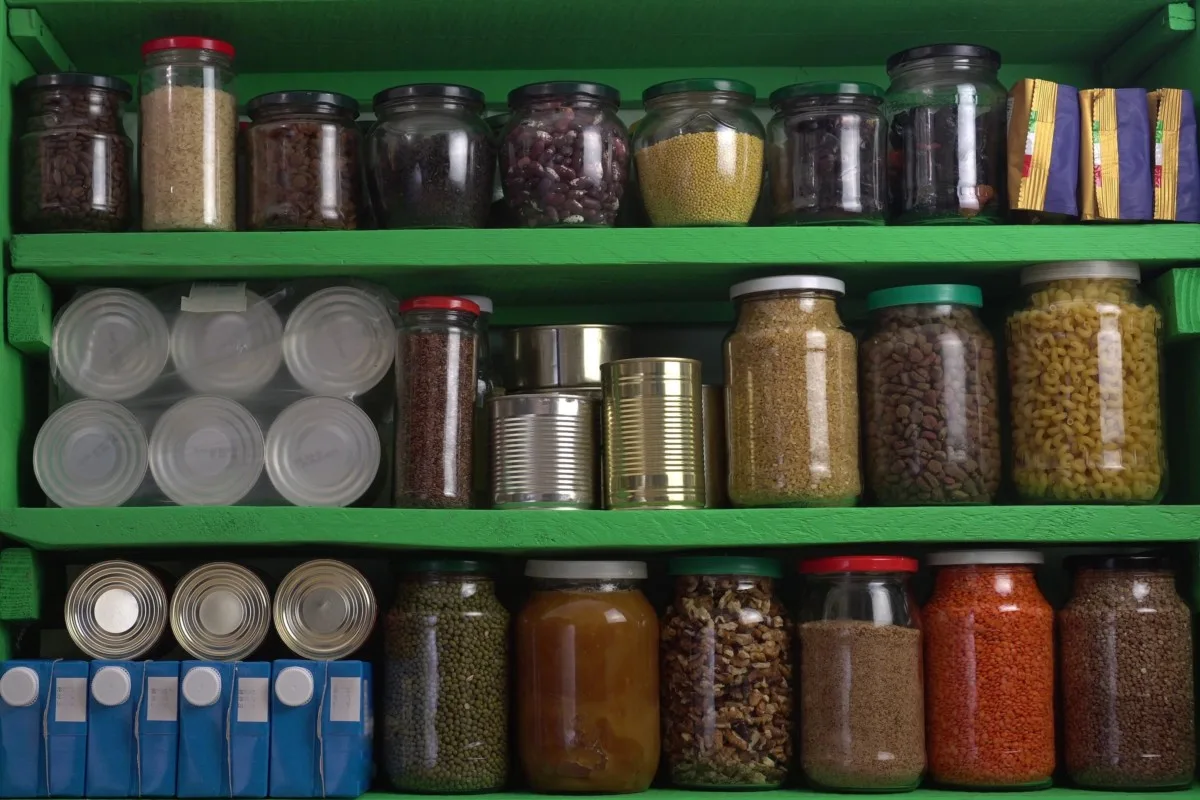
Not all foods can last forever. Except one. That would be honey. It’s but one of the longest-lasting foods to store in your pantry – but only if you store it properly.
Most resources state that honey should be consumed within 12 months for the best quality. However, 2,000-year-old honey is still safe to eat, as long as no water or moisture was ever introduced into the honey. When you store your honey right, there is no expiration date.
Naturally, you need more than honey to survive.
Of course, you can always grow a survival garden to keep fresh foods at the ready. That’s your outdoor storage which goes hand in hand with long-lasting foods you can store inside – in your pantry.
But you don’t need to be quite that extreme to consider yourself a prepper. It’s perfectly alright to be an ordinary person using common sense prepping skills. Luckily, it’s not a must to have a garden to be prepared.
While some items on this list of long-lasting foods can be made at home, most of them can be purchased from a store. From then on, it’s up to you to store them properly.
Why Store Long Lasting Foods?
Think about what’s in your fridge and cabinets for a moment. Do you have at least two weeks’ worth of food and water sitting there? Or could you be better prepared?
Could you go a month without buying food? Without the use of a fridge or a freezer?
What if the power was out for a week? Would you still have enough to eat?
It’s easier than it seems. At least the storage part. The other aspect of setting food aside for later is a mindset issue. You have to be prepared to eat what’s there, rather than heading to the store each time you have a craving to eat something different. Our ancestors did it, we can do it too.
What it really comes down to, is there is something deeply satisfying about having a bonus stock of food, for when times aren’t so grand. As long as you know how to cook from scratch, meals can still be plenty enjoyable.
We’ll start the list with not everyone’s favorite, but a very important food to store for the long term. Hey, you can always trade it down the line for something else.
1. Dried Beans
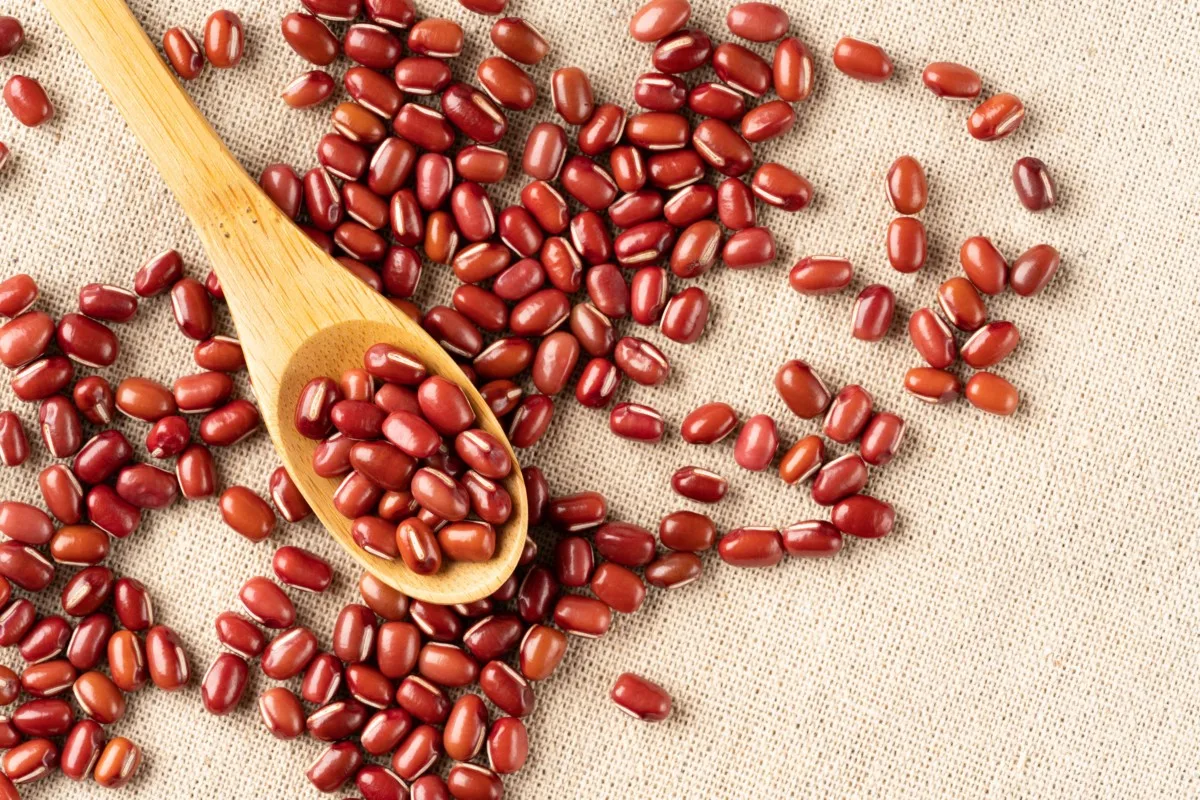
Dried beans are one of the cheapest long-term foods at the store. And cooking them? Everyone is always intimidated by soaking beans, but there are plenty of ways to cut down on their cooking time. You can use the quick-soak method, or if you have an Instant Pot cooking dried beans is even faster.
However, beans are the real deal when it comes to long-term storage. For the more official record, dried beans have a shelf life of one or two years. On the less official record, they start to lose their nutrient value after five years. For those who challenge this, they say dried beans have up to a thirty-year shelf life.
I don’t know about you, but foods in our pantry rarely make it past the three-year mark without being eaten and replaced. That’s part of the prepping rule. What comes in must go out. What goes out must come back in.
Store your beans in a cool, dark place in a tightly sealed container. Don’t store them in the bags you got them from the store. Moisture is the bean killer here, as with anything stored long term.
To keep meals interesting, add beans to rice, toss in some dried herbs or gather some fresh greens from your garden to go with them.
Related reading: 7 Reasons To Grow Dry Beans + How to Grow, Harvest & Store Them
2. Split Peas and Lentils
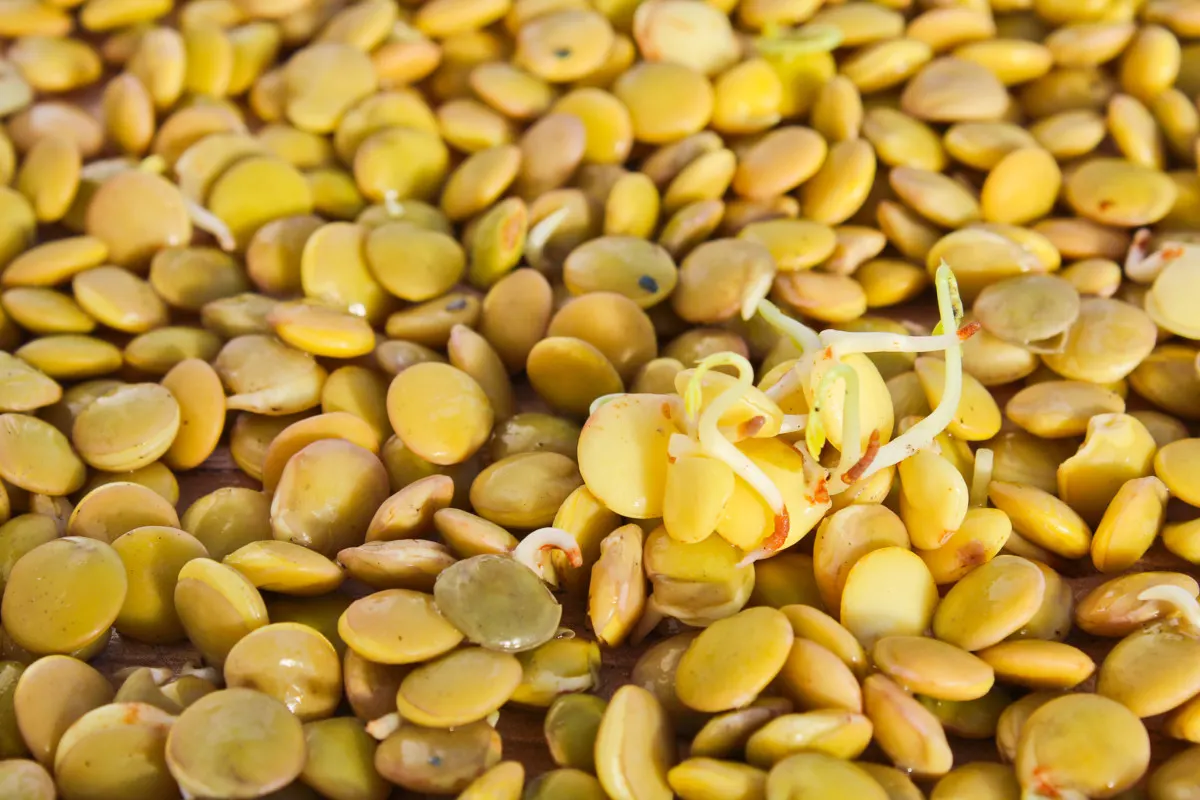
If beans aren’t your thing, how about lentils and split peas?
Lentils, like dried beans, have a similar shelf life. Two to three years to be sure. More if storage conditions are optimal. As long as they stay dry, you can basically keep them forever – not that you should.
The expiration date or “best by” date printed on the bag of dry pulses, including chickpeas, is simply a recommendation of quality, not of safety. Even if your dried legumes are past their date, they can still be consumed. Toss a small handful in soups and stews, and add a little sausage or a few fresh eggs for an even bigger burst of protein.
3. Rice
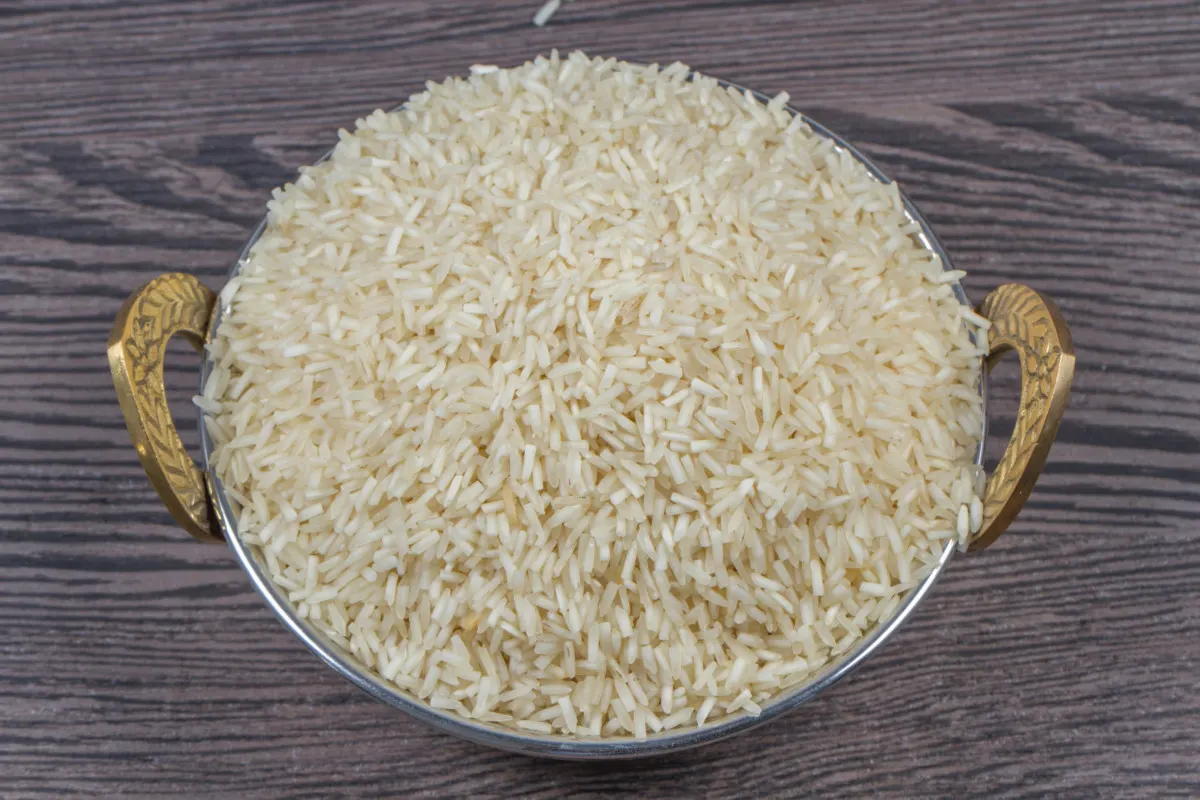
Yes, you can eat ten-year-old rice. White rice is truly a long-lasting food. Brown rice, on the other kernel, has a shelf life of about six months, due to its susceptibility to oxidation. So choose your rice wisely.
Besides white rice, wild, jasmine and basmati can all be stored indefinitely, so long as it is kept free of dust, insects and moisture.
Rice should be stored in an air-tight container for optimal storage.
When in doubt, and if you have freezer space, uncooked rice can also be stored there.
4. Oats
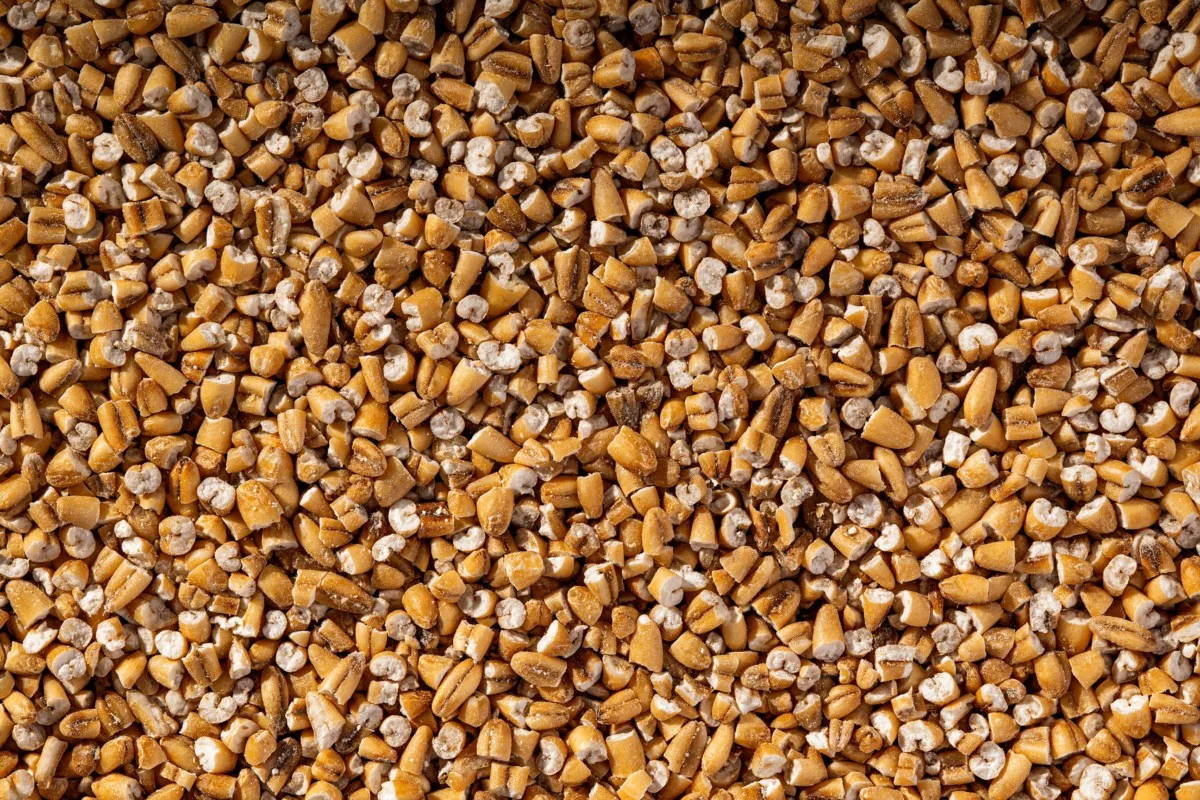
Again, for long-term food storage, airtight containers are your best friends. Invest in a good set and you’ll only have to buy them once.
Properly stored oats will last about a year in the packaging that they came in. You can push that up to two years in an air-tight container.
Thinking outside of oatmeal cookies, there are several reasons to eat oats in a myriad of non-sweet ways. Oats are a good source of protein, fiber, folate, vitamin B6 and niacin. They also contain manganese, magnesium, phosphorus, copper, zinc, iron and calcium.
Whole oats contain 5-9% fat, making them an ideal survival food.
If you can store them whole, then roll them yourself, you can get a much longer shelf life out of them, even up to twenty years. Instant oatmeal, no matter how convenient, is not suitable for long-term storage. You can only store it for three months.
5. Cornmeal and Popcorn
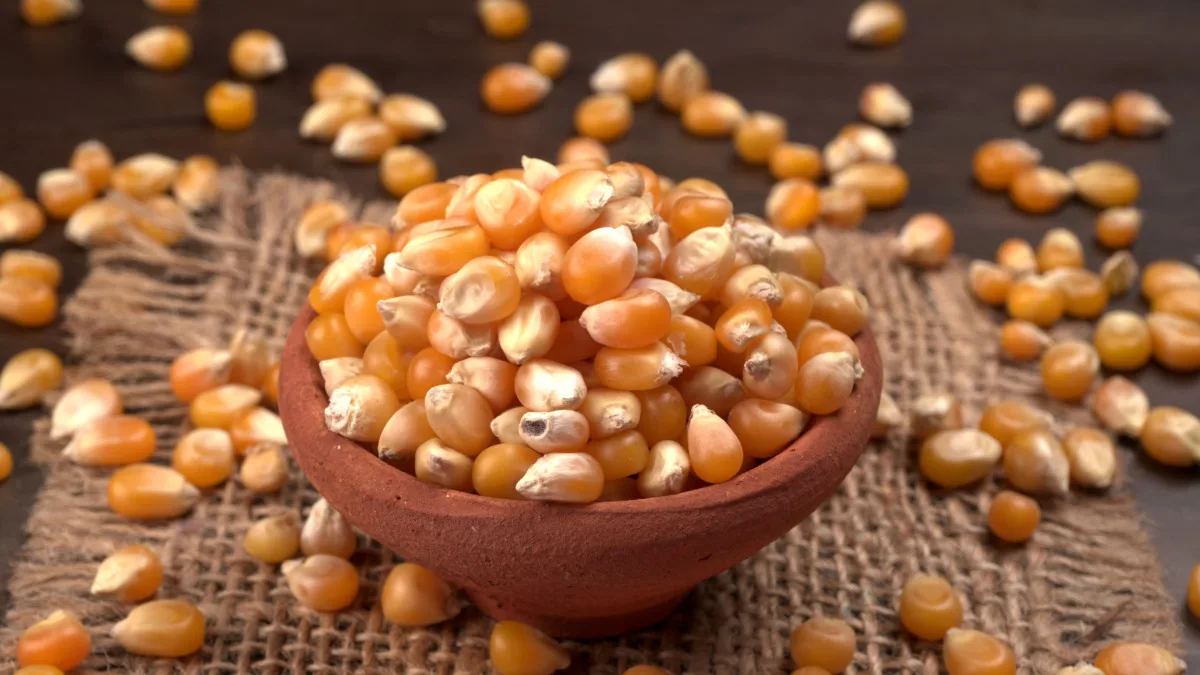
If you like one, you’ll probably enjoy the other. Whereas corn for cornmeal takes up a bit more garden space, there’s always room for popcorn in the garden. Though both are readily available at the store.
With popcorn, you can measure the shelf life in years, not in months. As long as there is no moisture in the bag or jar, you can enjoy a bowl of popcorn two years from now. Using a vacuum sealer is an excellent way to store grains.
Cornmeal has a shelf life of about a year. The more processed food becomes, the lesser shelf life is that remains. The best way to store cornmeal is in a cool, dry pantry. If moisture is a concern, use some oxygen absorbers to extend the life of your stored food.
6. Pasta
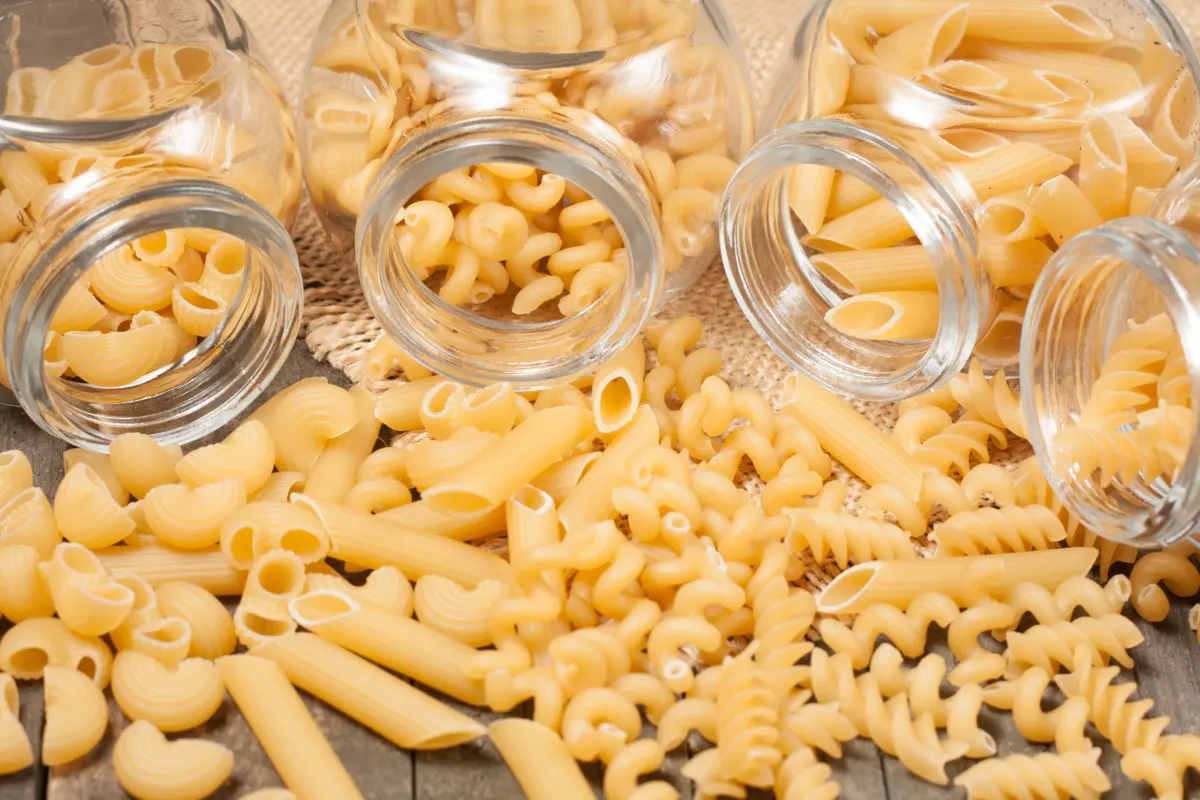
A long-lasting food that everyone loves is pasta. Any dried pasta can be stored for up to a year, or longer, depending on the airtight container. Primal Survivor suggests that with proper storage pasta is still good to eat at 25 years.
For longer-term storage, it’s best to remove pasta from its original packaging. Then store it in your own, airtight containers. If the pasta you buy comes in a box, you’ll want to store it in a jar anyway, so it doesn’t absorb chemicals such as glues used in packaging.
The same should be applied to anything that comes in paper packaging, as the paper absorbs moisture. While paper is a great alternative when it comes to reducing plastic in your life, think of it as the way to get the food home, then store it safely in jars and metal containers. Tracey has a great article about how to store pantry basics.
7. Bouillon Cubes or Dehydrated Mirepoix
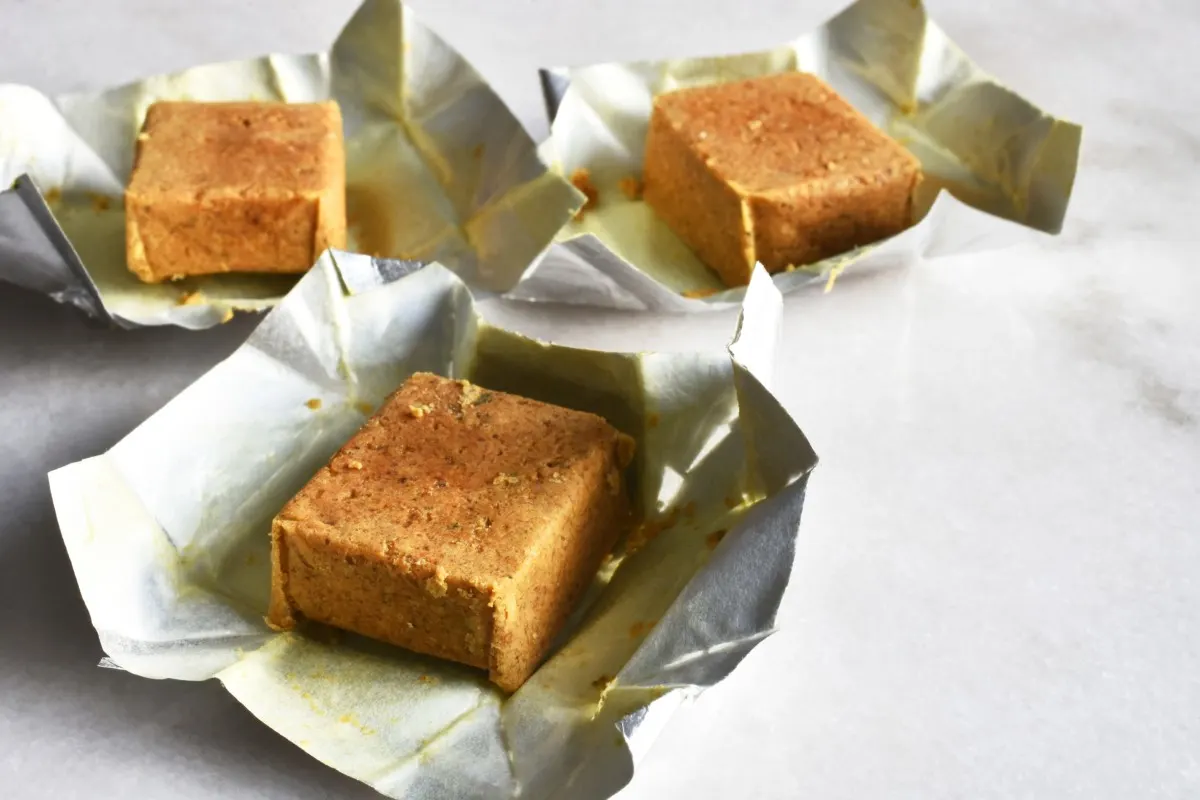
Buy it from the store, or do it yourself. It really doesn’t matter, so long as you have some delicious soup stock on hand to go with rice, beans or lentils.
Bouillon cubes have a long shelf life of 18-24 months at room temperature. Although I’ve seen and eaten much older soup cubes than that. If they have an expiration date on them, many people suggest you can go a year or two past that. Real-life experience is the best indicator to test if things have gone off.
To test if a bouillon cube has gone bad, perform a smell check first. You’ll almost always be able to smell mold. If it smells moldy, throw it away. Next, check the taste. If the flavor isn’t as strong as it used to be, go ahead and use two cubes to enrich your soup instead.
Homemade and dehydrated mirepoix is a great alternative to a commercially made product. If you have the ingredients and the time, be sure to make up a batch for your pantry. It can be stored in an air-tight container or frozen.
8. Powdered Milk
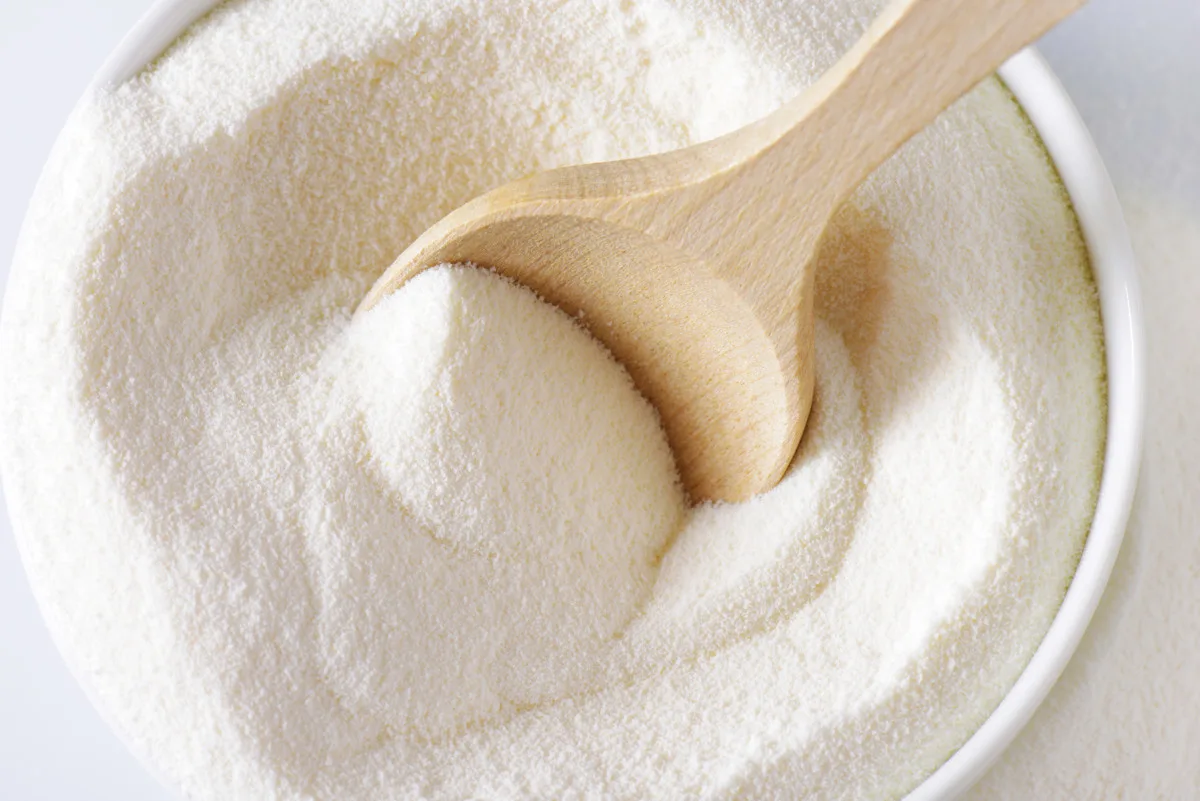
Fresh milk is the best, preferably straight from the cow. Store-bought milk comes next in terms of quality, but both of these have a very short shelf life.
While powdered milk isn’t something you’d want to drink every day, it makes sense to have some on hand for emergencies. Or for when you really want to make a cake and someone’s drunk all the milk.
How long can you store powdered milk?
You’d probably be surprised to find out that 18 months is the “best by” date. Though you can store it much longer than this, up to ten years, if the package is unopened.
Nonfat dry powdered milk, it turns out can have a 25-year shelf life.
If you can’t live without number 24 on this list, make sure to have a few pouches of powdered milk stocked in your pantry as a backup.
9. Peanut Butter
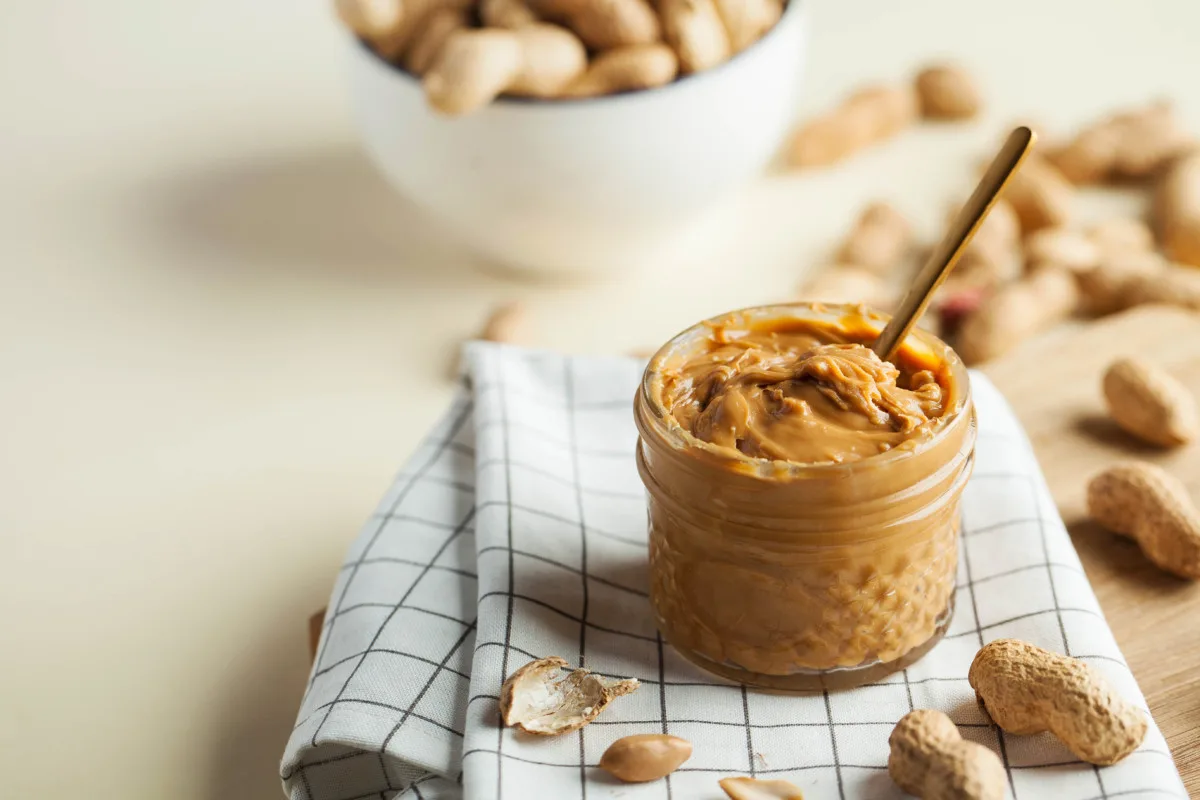
A spoonful of peanut butter will give you that extra burst of energy you need in any situation. If you aren’t allergic, you should always have a couple of jars on hand.
Normally, I like to go for organic peanut butter. But in the case of long-term storage, this one will degrade the fastest.
In planning for a less certain future, processed nut butter will most definitely last longer, due to the addition of stabilizers.
Overall, nuts have a relatively short shelf life, be sure to eat them up before they go rancid.
Related reading: You’ve Been Storing Peanut Butter Wrong Your Entire Life from Eat This, Not that!
10. Coconut Oil
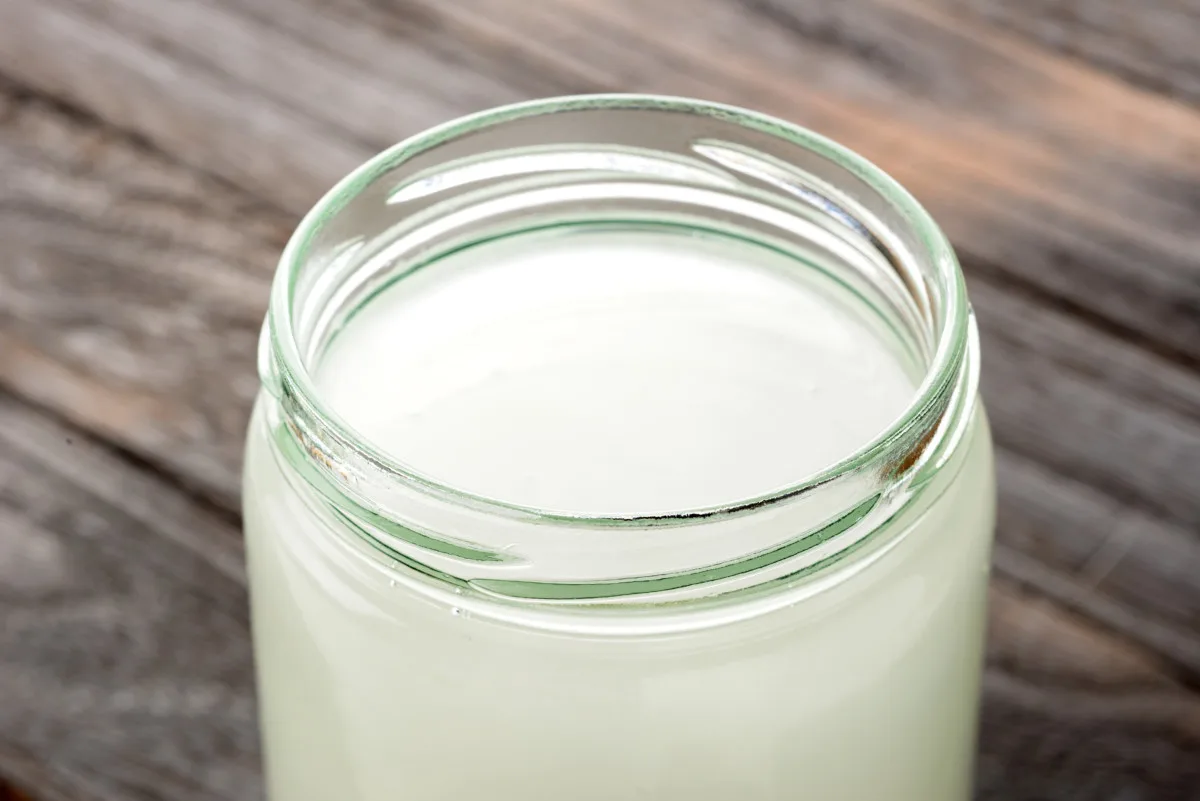
Coconut oil has seemingly endless uses, we won’t get into them here.
More importantly, it’s a nutritious fat that is shelf-stable for more than two years. It doesn’t necessarily go bad by the expiration date.
As with all canned items on this list, as long as the factory seal is in place, whatever is inside the jar should be good for an extended period of time.
If your coconut oil happens to go bad, you can always use it for more practical applications such as hand moisturizer or sunscreen.
11. Ghee
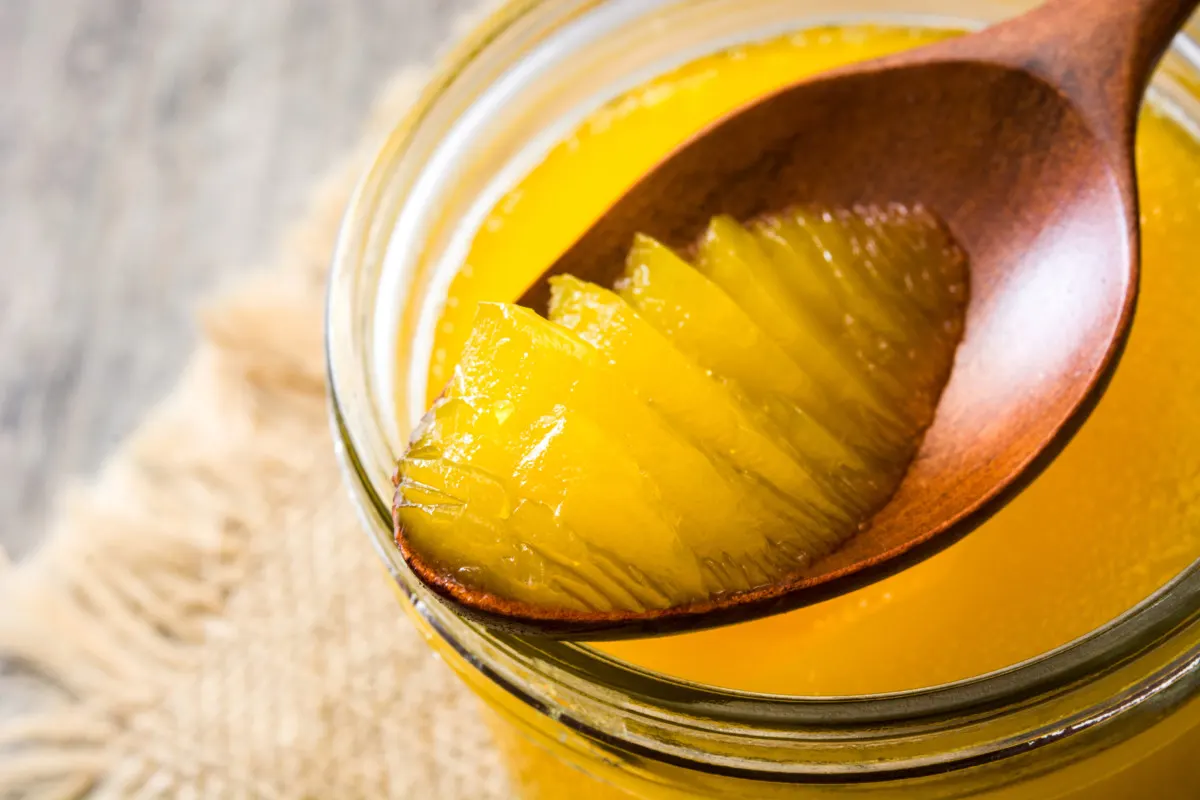
Survival foods are often focused on carbs and proteins. Yet you need high-quality fats in your diet. One of the longer-lasting fats you’ll want to store on your pantry shelf is ghee.
You can learn to make ghee at home, or buy it from the store. Keep it in a cool, dark place and be sure to use it up within six months to a year. You can refrigerate it or freeze it for longer if necessary.
To find out if your ghee is no longer good enough to eat, read this.
12. Vinegar
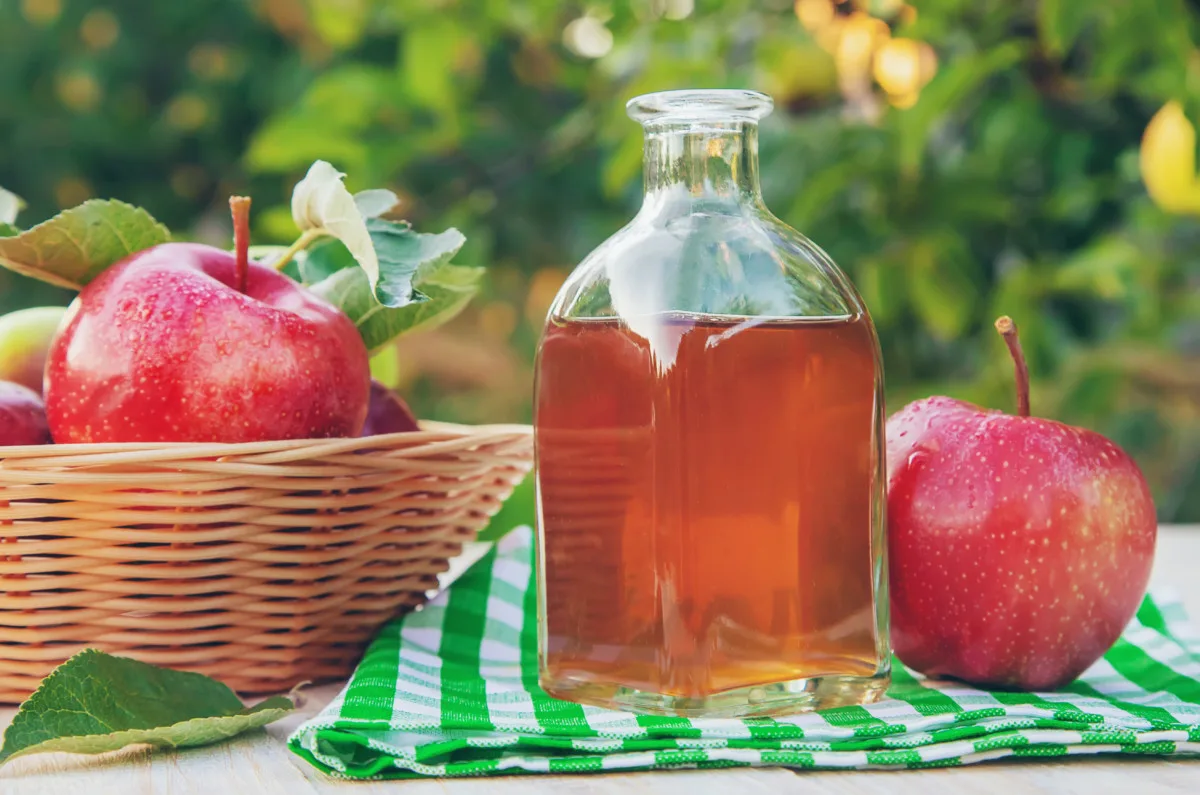
I can’t imagine life without vinegar. For starters, you can drink it for your health, diluted, of course. It can also be used on your garden plants. Use it in cleaning, or the laundry, for canning pickles and much more.
Perhaps best of all, you can even make an apple scrap vinegar from peels and cores. What a pragmatic way to use the entire fruit.
Distilled white vinegar has a shelf life of “indefinitely”. Apple cider vinegar lasts for five years, whereas balsamic and rice vinegar lasts for around two to three.
If it is no longer suitable for eating, you can then use it for cleaning. Its uses never expire.
13. Salt
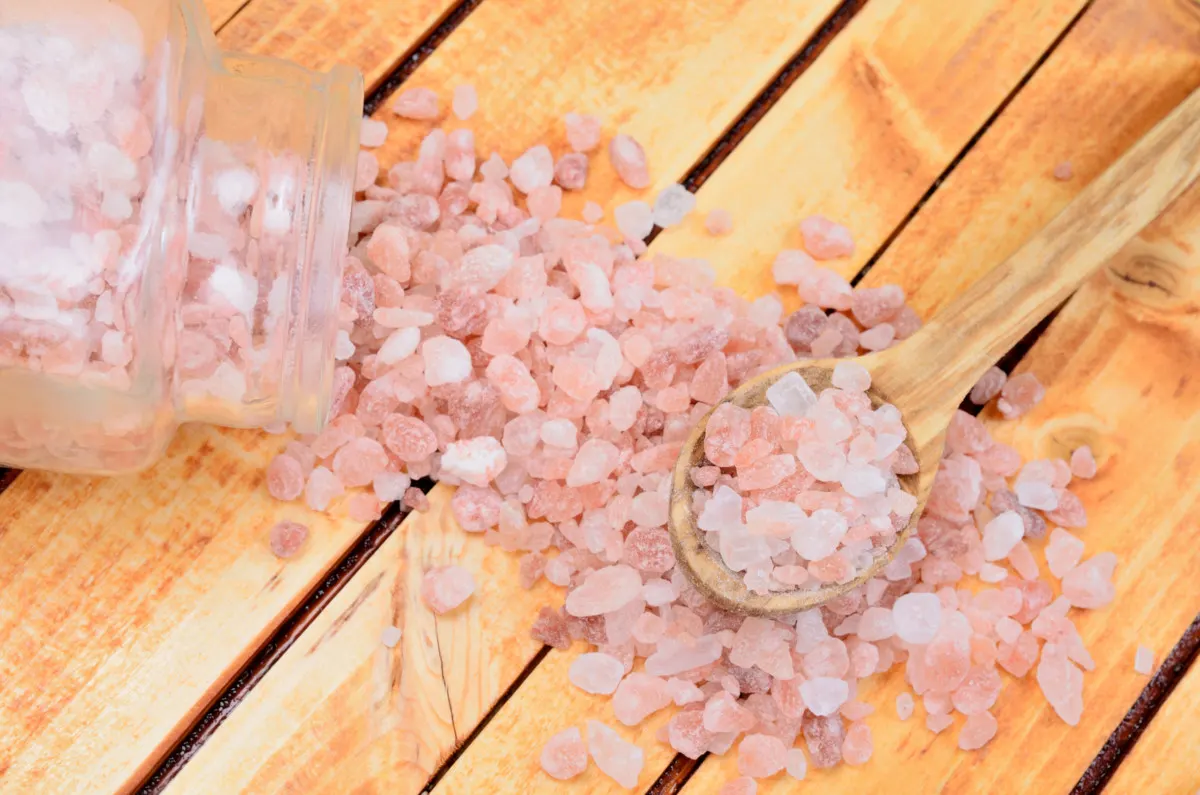
Salt is an essential item to have in your home. You need it for maintaining a healthy balance of fluids in the blood, transmitting nerve impulses as well as contracting and relaxing muscles.
Outside of the body, salt is indispensable for cooking and preserving. Not only is it important for conserving vegetables in brine, like sauerkraut, but you’ll also need several pounds of salt if you are going to preserve meat for the short term.
Since salt isn’t something you can grow or make, it’s important to stock up on it while you can get it. Storing salt in bulk makes perfect sense. Not only will you be able to use it, but you may also need it for your animals or for trading if cash won’t do. Don’t forget, entire economies were based on salt production and trade.
While salt on its own isn’t technically considered a long-lasting food, it is such an important item, that it should be in every pantry.
How much salt to store and how to store it? Find the answers here.
14. Sugar
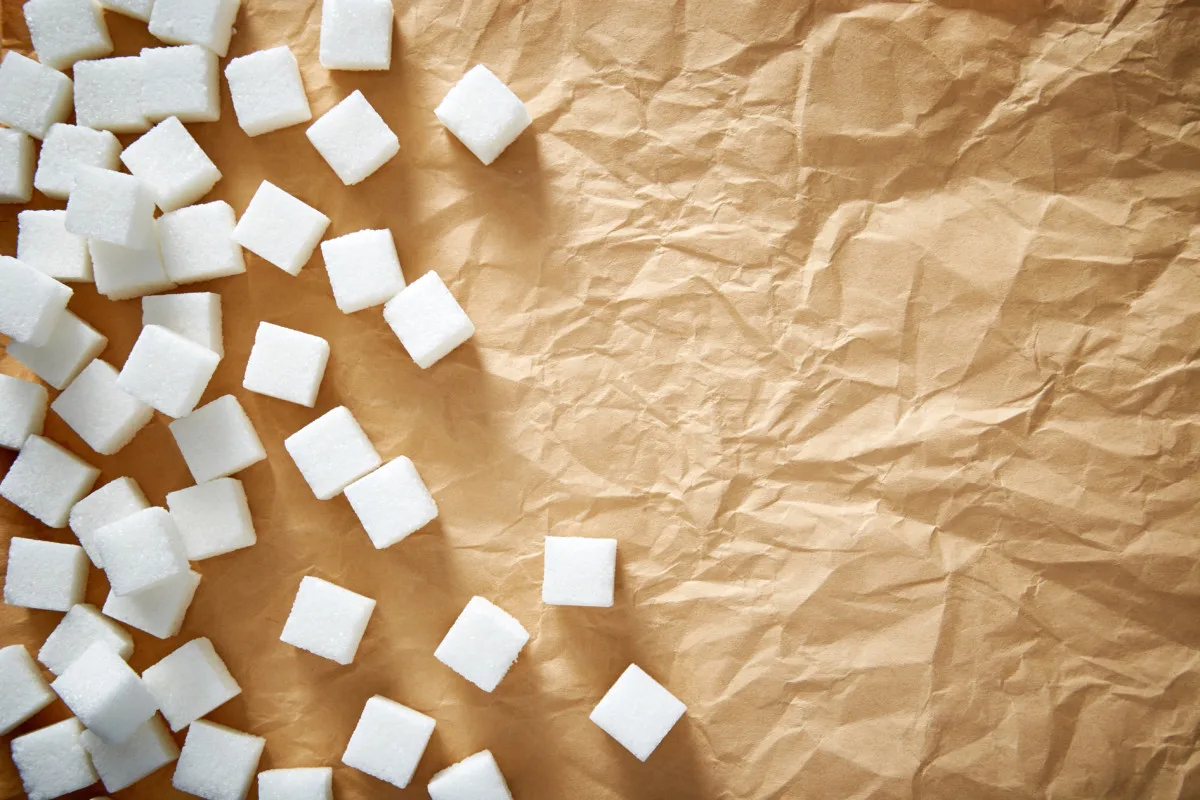
Technically, sugar never spoils, it’s only the texture that might change.
That being said, you do need the right storage containers. The thin bag or paper it comes in from the store simply won’t do. On average, it’s recommended to replace sugar older than two years, though it is also one of those items that can last indefinitely.
If you don’t eat cane or beet sugar, the next item on the list for you is honey.
15. Honey
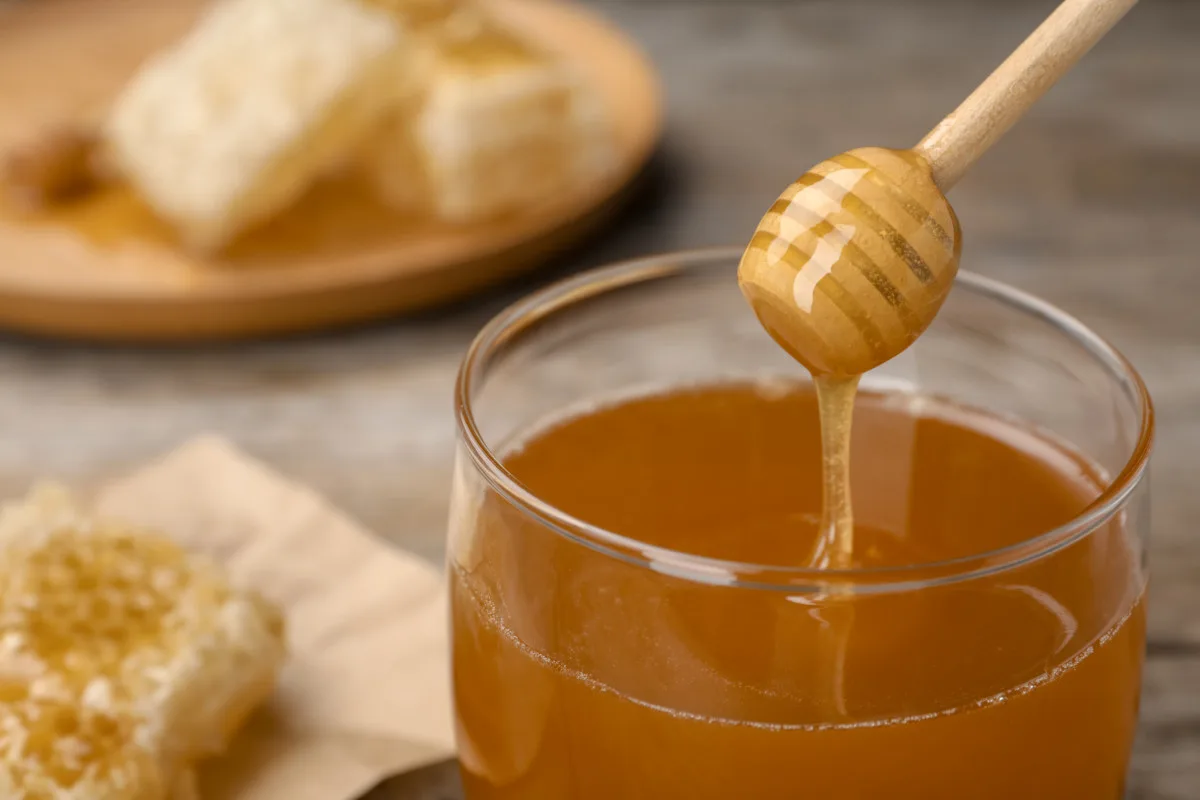
When this article began, it noted that honey never expires, it is perhaps the longest-lasting food source. In an airtight container, it will be good fifty years from now, even if it crystallizes or darkens over time.
Because honey has a pH of between 3.5 to 5.5, it naturally inhibits bacterial growth. For the past decade, my husband and I have canned exclusively with honey, not sugar. The results have been deliciously tasty.
Not only is honey edible, but it can also serve as a medicine too. Apply it to bee stings for quick relief, use it for a cough or cold, and even treat minor cuts, scrapes and burns. Just be sure it is real, raw honey; not adulterated in any way.
16. Cheese
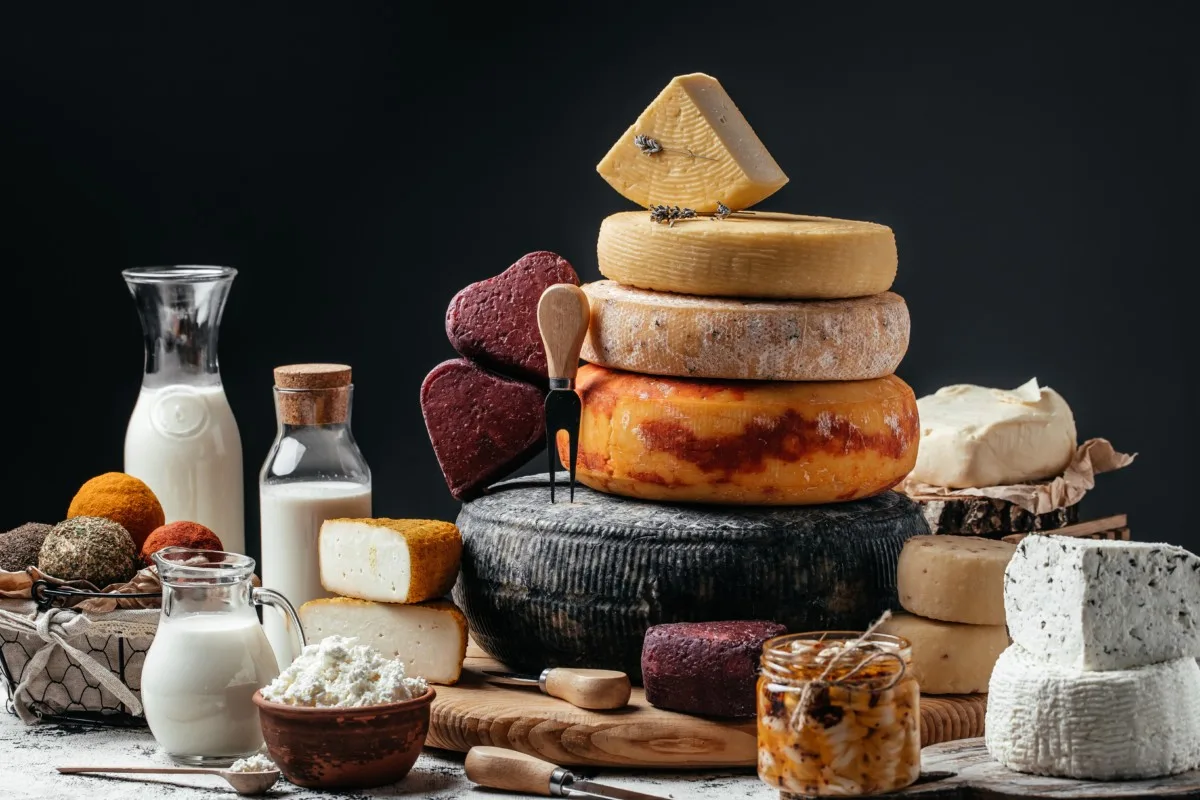
Certain foods you can eat past the expiration date, so long as no one squeamish is watching.
Cheese is one of those foods where you can scrape the outside mold away and carry on as usual.
It’s also worth noting, that the harder the cheese, and the thicker the wax coating, the longer you can store it. Beyond large wheels of cheese, it’s far easier to save it in powdered form. Powdered cheeses have a shelf life of three to five years, even up to ten, in proper storage containers. It’s an excellent way to get some much-needed calories in after a hard day in the garden, or at work.
Related reading: How to Dehydrate Cheese For Long Term Storage from Joybilee Farm
17. Dehydrated Fruits
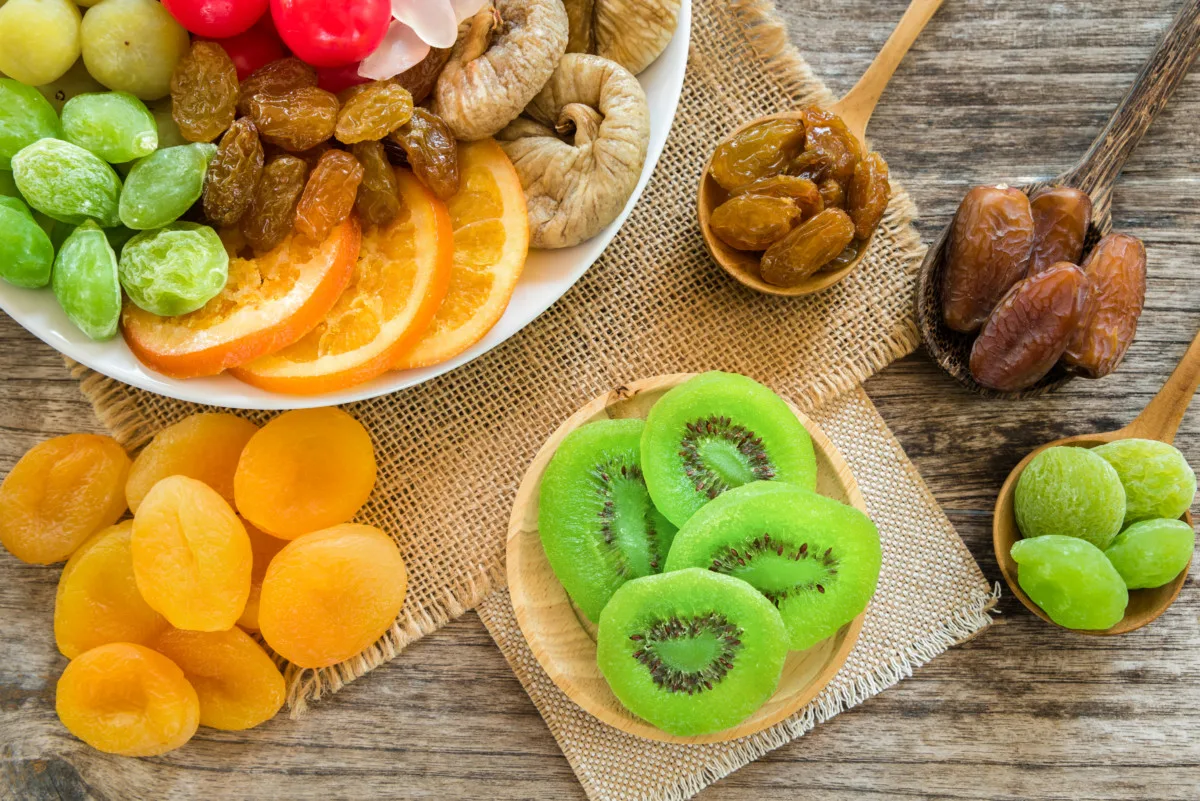
Fruit has a notoriously short shelf life. Long ago our ancestors learned to dry those sweet gems in the sun, or in large earth ovens. In our modern world, we now have the use of all sorts of ovens and food dehydrators to get the job easily done for us.
Fruit slices, raisins, plums, apricots, sour cherries, strawberries, bananas, apple chips, you name it, you can dry it.
When you buy dried fruit from the store, they tend to be pretty pricey. There’s a lot of energy consumption, however, in creating a dense, flavorful product.
Choose a small airtight container for each type of fruit you dry, don’t mix fruits trying to save space, and store them in a cool, dry place for up to five years. Dates and raisins may last even longer than this.
Rehydrating them is easy enough, just let them soak in a small bowl of water.
18. Dehydrated Vegetables
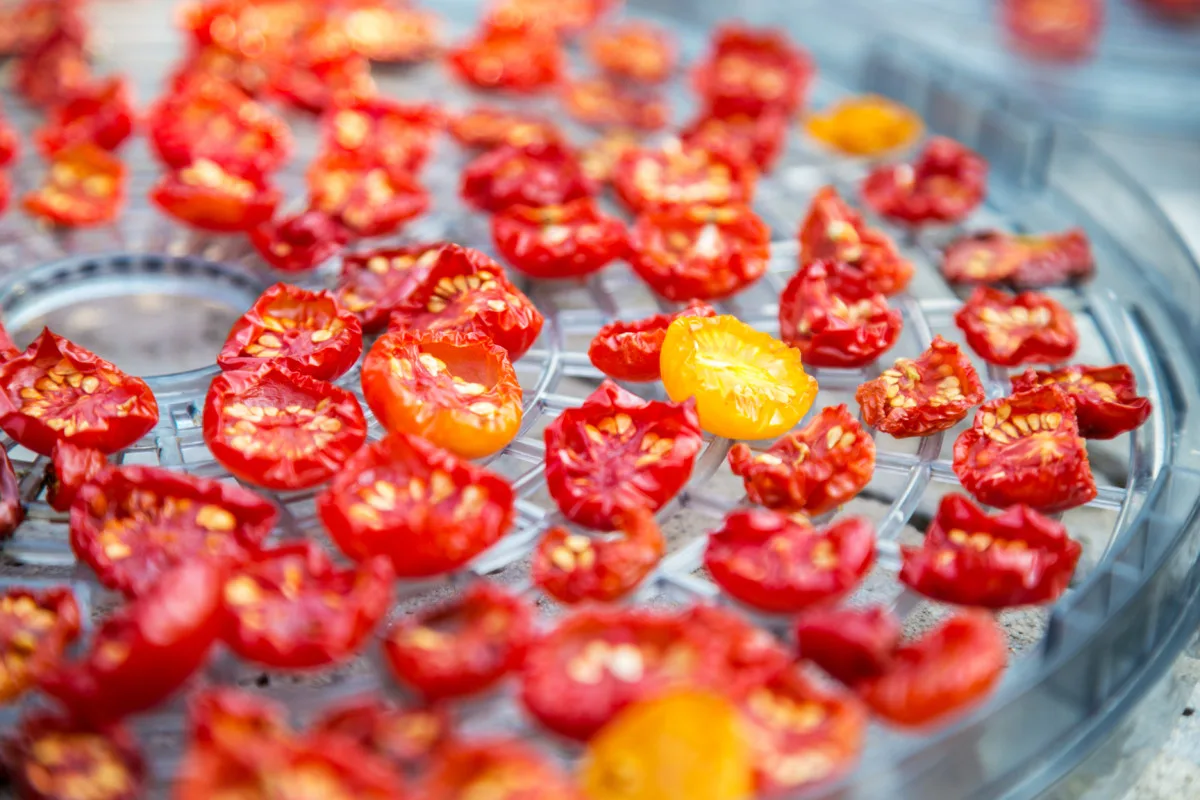
As with fruits, vegetables are perhaps even easier to dehydrate as they tend to have a lower water content to start with. Keeping a variety of dried vegetables on hand is a great way to add flavor, vitamins and minerals to your meals.
Dried carrots, potatoes, corn, kale, tomatoes and spinach are among the most popular vegetables to dehydrate. Don’t forget about the importance of stocking up on dried mushrooms too. Chaga and reishi powders make for brain-boosting teas, but they can also be added to soups and stews for additional flavor.
19. Dried Herbs
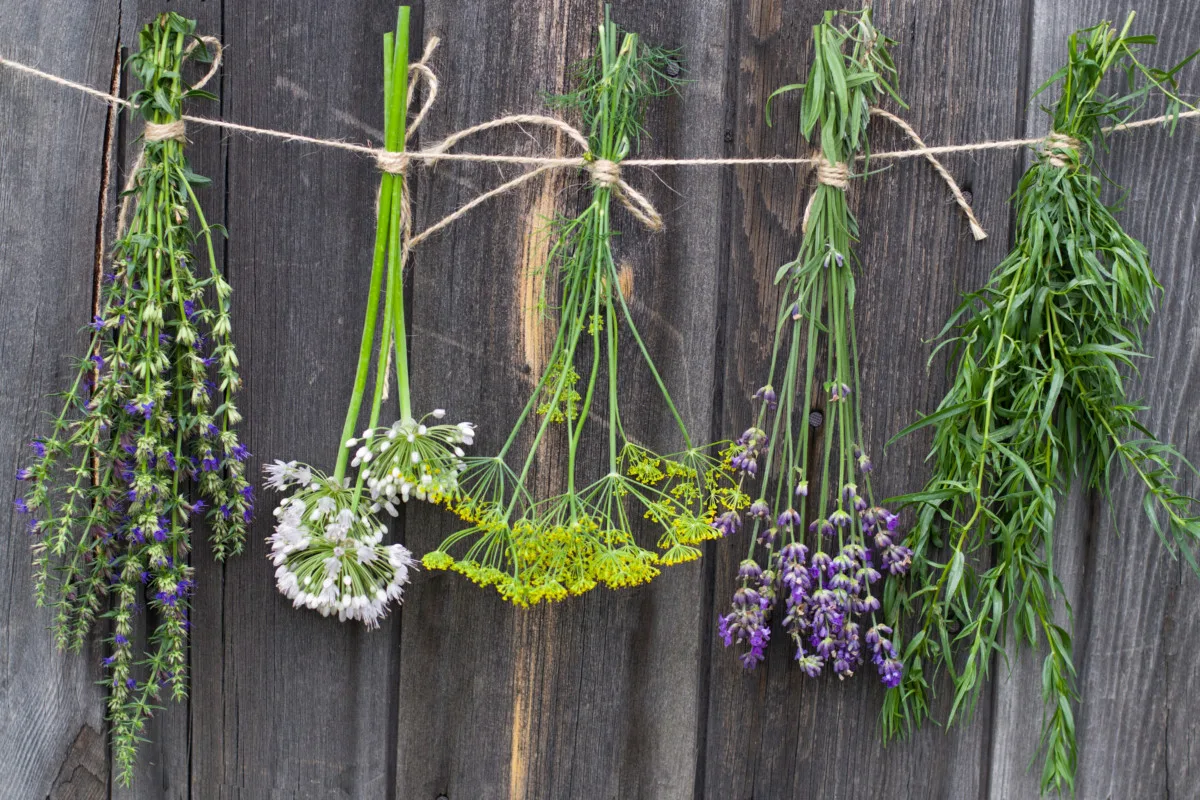
With several kilos of dried plants in our pantry, mixed between cupboards and cabinets, it’s also hard to imagine life without herbs. Many of them come from our own garden, even more come from foraging in the surrounding fields and woodlands.
Dried nettle, plantain, dandelion leaves, raspberry canes, St. John’s wort, yarrow. With more than thirty locally harvested herbs to choose from, tea is never boring. When you learn to eat what’s local, you’ll never be lost for spices.
Many of these can even be added to tinctures and soothing infused oils for your private herbal apothecary. Consider adding some long-lasting foods in the form of herbs to your pantry.
20. Powdered Eggshells
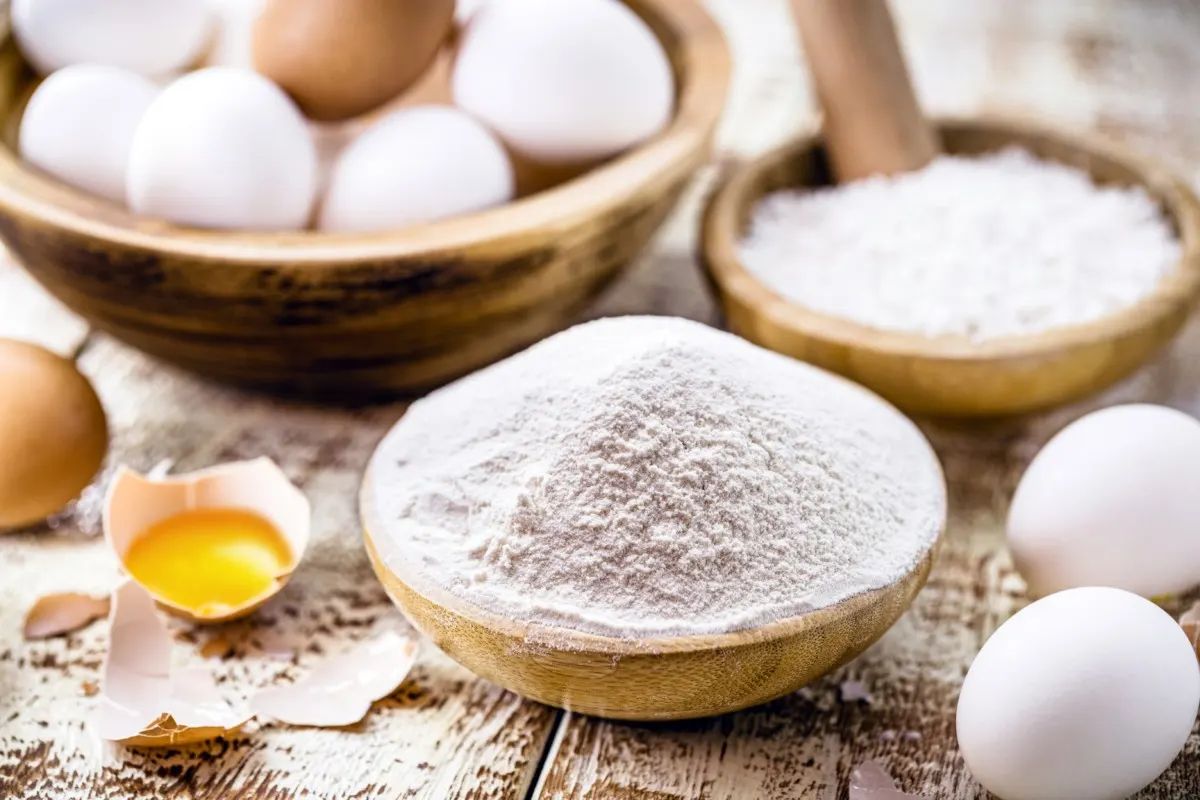
Eggshells are for much more than eating. Of course, you have to wash, boil, dry and grind them first.
That extra effort is worth it though, for eggshells are rich in calcium. Something we all need for strong bones and teeth. Mixed with clay (another uncommon long-life pantry staple) you can even make an emergency toothpaste.
Eggshells can help you whiten your laundry and they can also be used to scrub hard-to-clean pots.
But perhaps the best way to use them up is to add a handful of prepared eggshells to your apple cider vinegar. This concoction acts as a natural medicine, relieving acid reflux and treating minor skin irritations.
In an airtight container, dried and ground eggshells can be stored for six months up to a year, or even longer.
21. Pemmican
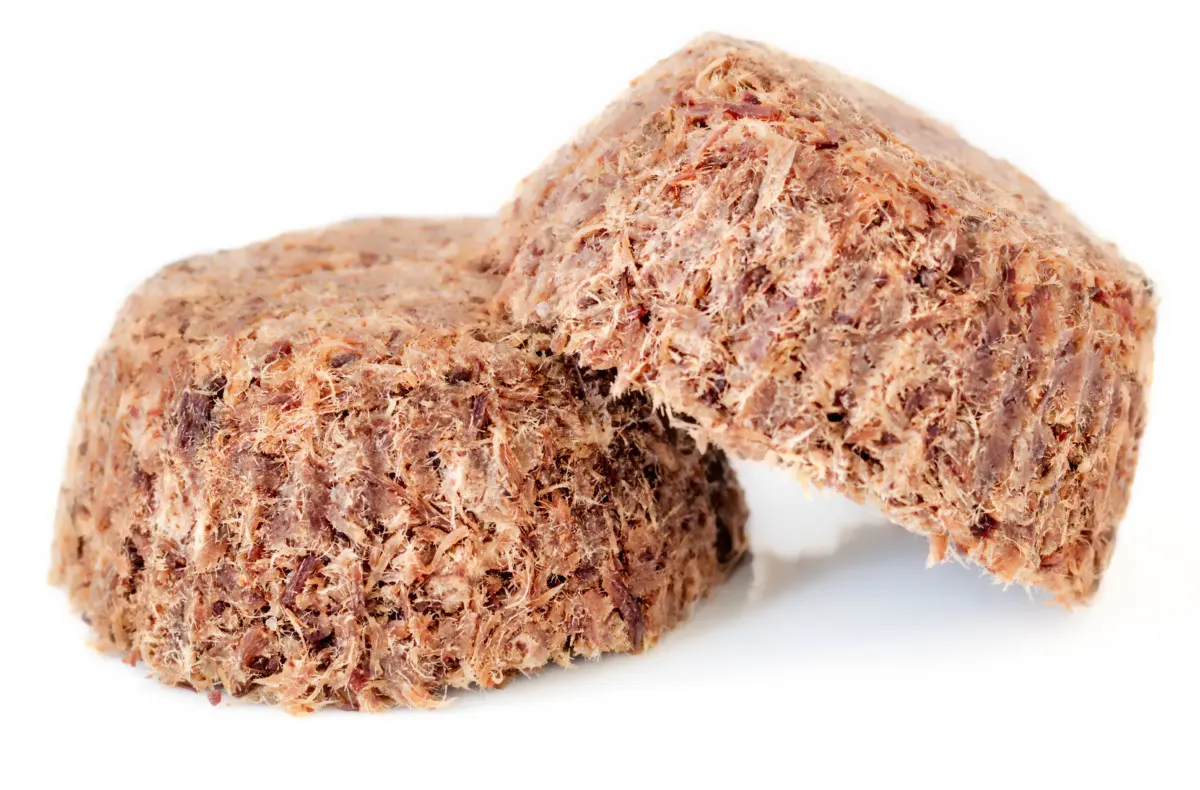
If you aren’t quite sure what pemmican is, here’s the quick answer: pemmican is a mixture of tallow, dried meat and oftentimes, dried berries. Traditionally it was made out of bison, though it can also be made from moose, deer or beef.
If you’d like to learn how to make this long-lasting food for yourself, try this recipe. Or this one.
You can also buy pre-made pemmican if you’d like to forgo the turning of meat into powder.
When salted and stored correctly in a dark, dry place, pemmican can last for several years, generally one to five. Others say it’s edible after a decade. You decide for yourself.
22. Canned Fish and Meat
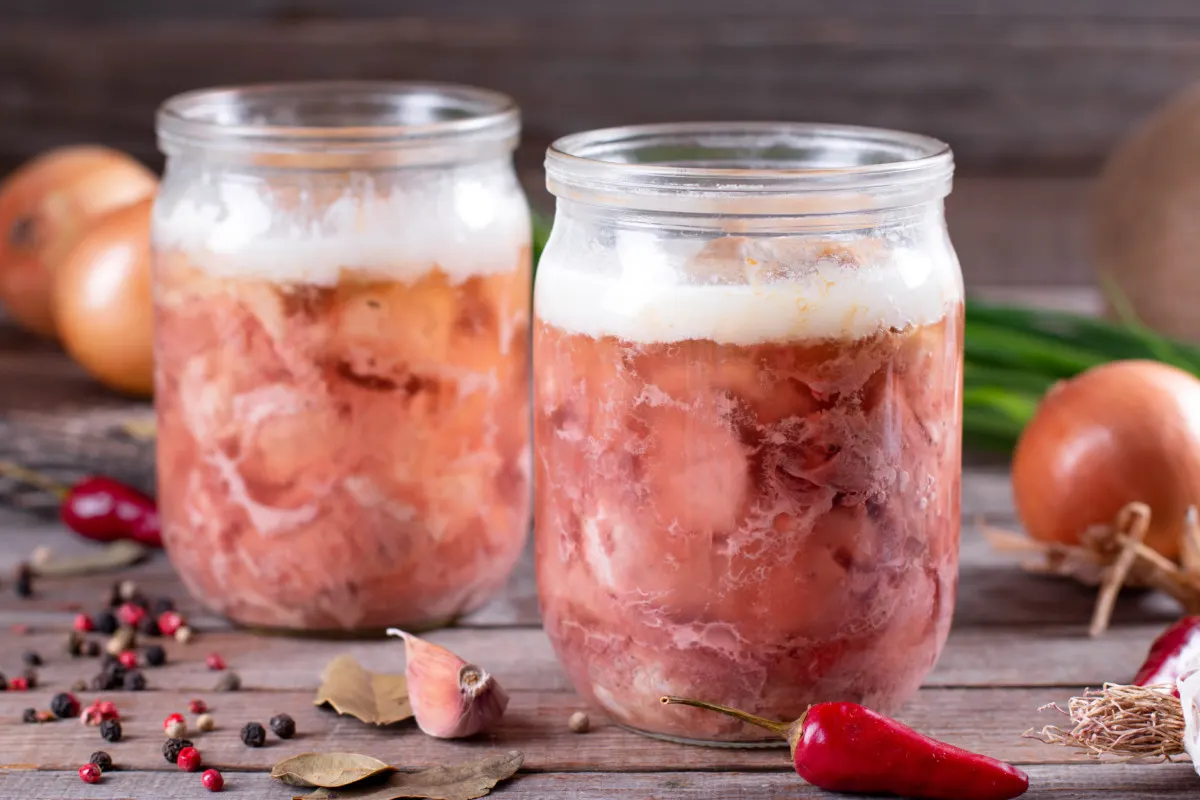
When most people get into canning and preserving, the simplest pickles, chutneys and jams come first. There is always a little trepidation when it comes to canning fish and jarring up meat.
Not that it’s much harder. It just takes some more equipment to preserve it properly. When canning meat you must use a pressure canner. Without that, it’s best to leave the canning to someone else.
Seriously, canning meat is a great skill to learn. It saves on freezer space, it’s a wonderful way to get ready-to-eat protein and it tastes pretty darn good.
Store-bought canned meat and fish will last for two to five years, whereas home-canned meat should be used up by the second year.
23. Baking Soda
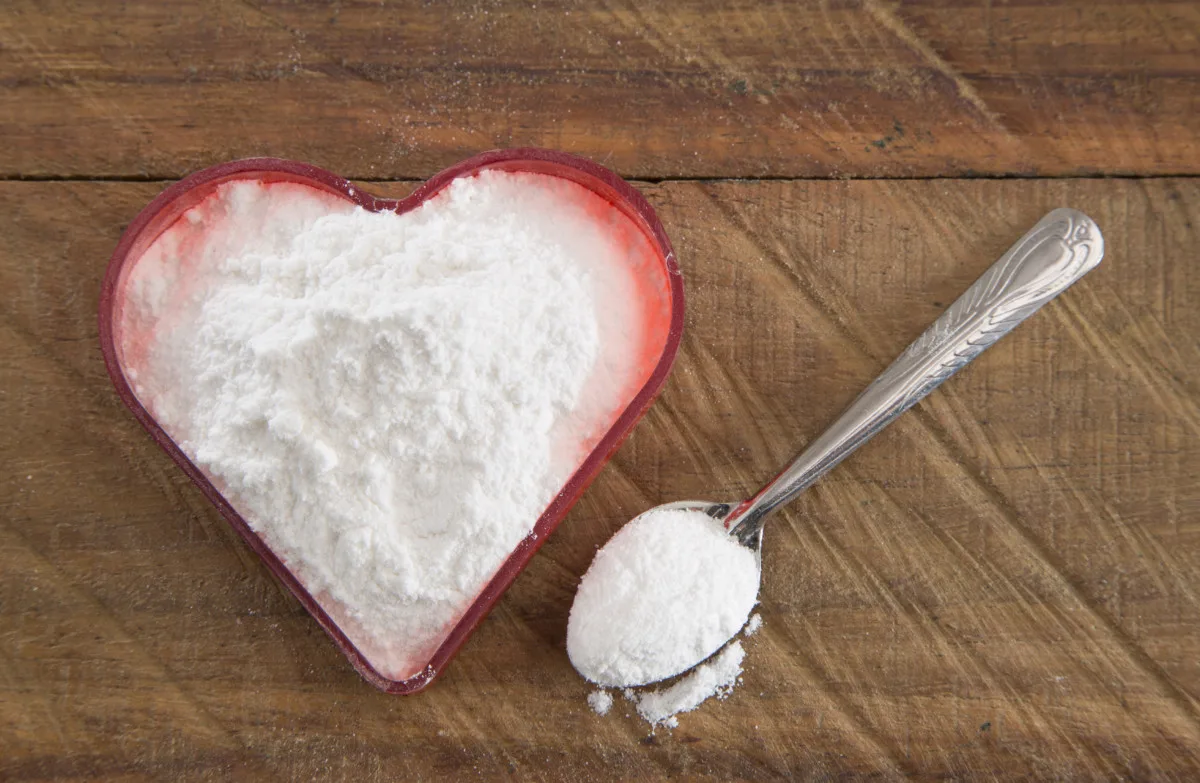
Another item to stock in your pantry for the long haul is baking soda. You can use it for far more than baking.
It can ease an upset stomach or help to clean your teeth. It’s also one of the best natural household cleaners you can find.
A box of opened baking soda may be stored for six months, whereas an unopened one will keep at room temperature for eighteen months or more.
It’s wise to remove it from a box or paper packaging that will absorb moisture. Instead, store it in a jar or an airtight, moisture-proof container.
24. Instant Coffee and Cocoa Powder
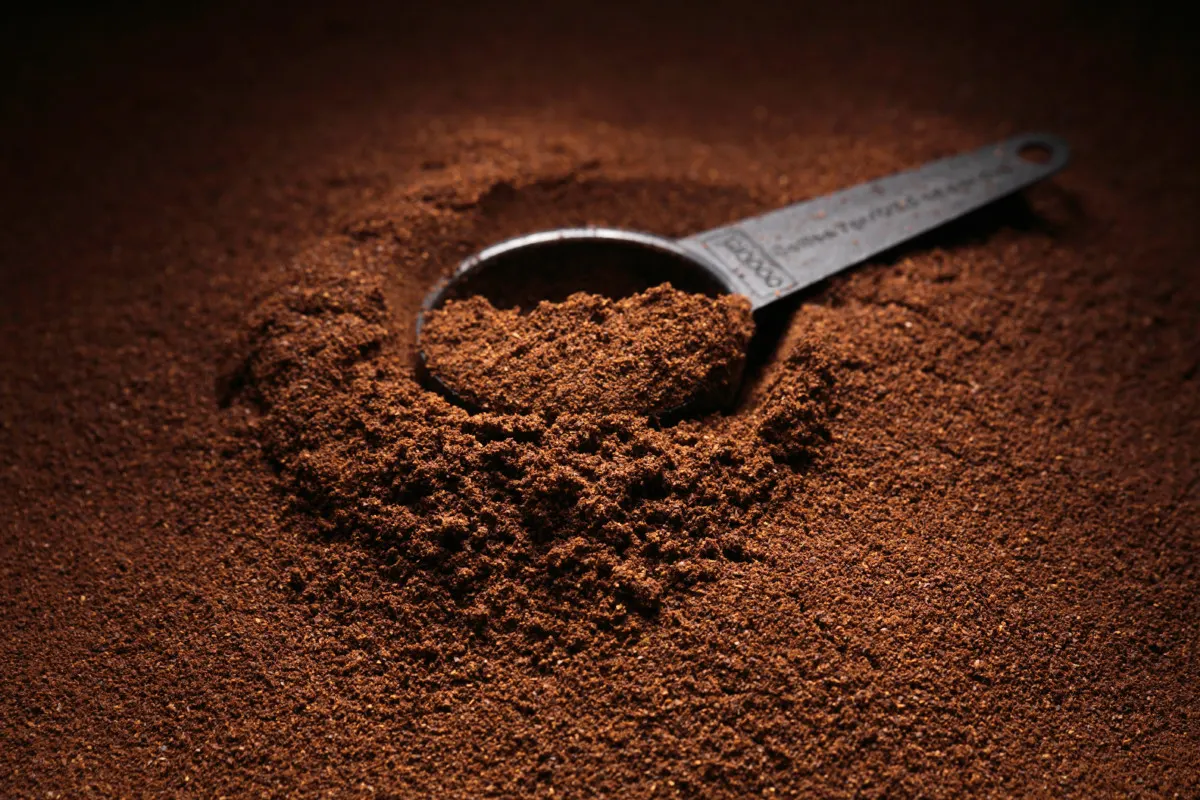
If you are longing for a cup of coffee, it can be ready in almost an instant. All you have to do is add hot water. Granted it won’t be on par with your creamy cappuccino, but in a pinch, it will have you focused in minutes. In the state of an emergency, it feels good to be mentally alert.
As far as shelf life is concerned, instant coffee lasts way beyond its expiration date; so long as you keep the moisture out of it. Opened, or unopened, you can expect your instant cuppa to last twenty years on the shelf.
Cocoa powder, stored in a container with a tight-fitting lid, will last for a minimum of two years. Store it in a cool, dry place. Add some powdered milk and honey or sugar and have yourself a tasty drink.
25. Freeze-Dried Foods
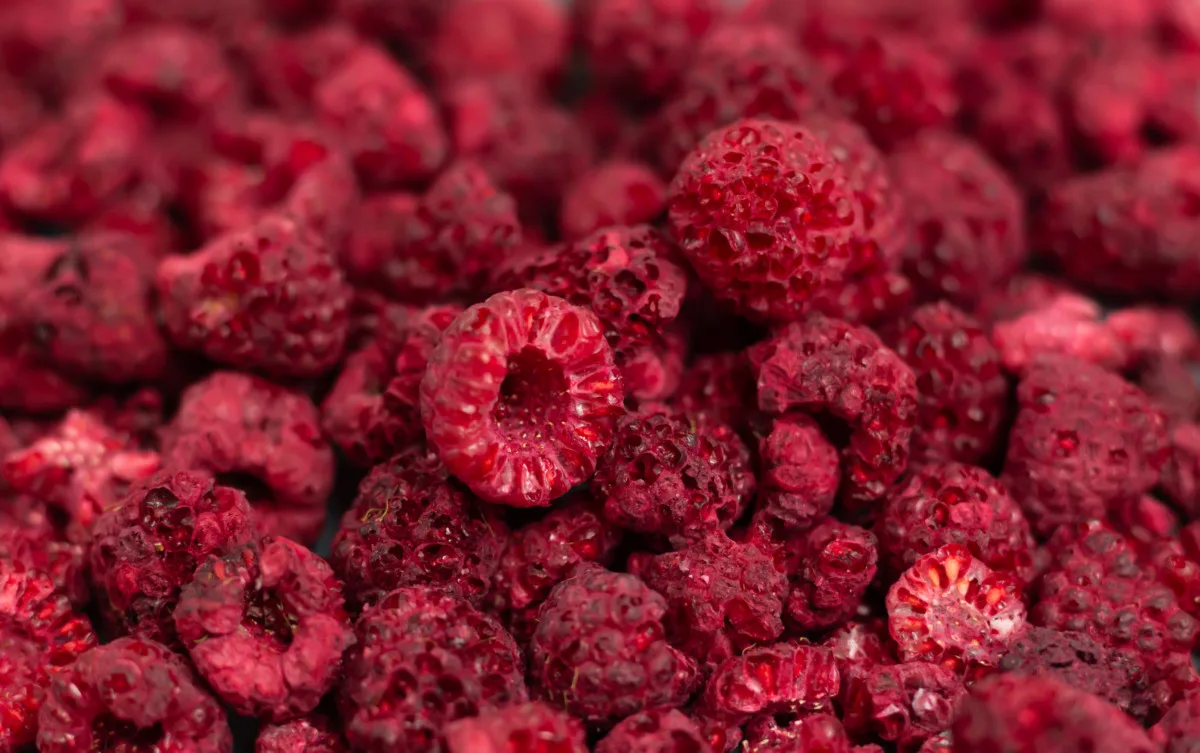
Nearly everything on this list of foods to store in your pantry can be made at home. If you have a freeze drying machine, you’ve got this one covered too.
But if you don’t, all you have to do, is shop around for some emergency supplies.
Here are a few freeze-drying companies to check out, you don’t even need to be a hiker or extreme backpacker to enjoy their products:
Freeze-dried food can be stored for up to twenty-five years! That’s something you can almost consider a quality “hand-me-down”.
To sum it up…
Prepping is a process where you accumulate the necessary skills, and food, over time.
Try not to feel overwhelmed by the desire to stock every item on this list. Only save those foods that you are likely to eat.
Store a selection of these foods for peace of mind that you can handle any storm, financial situation or other uncomfortable event that heads your way. As long as you and your family are well-fed, you can think clearly and react accordingly.
Also, in terms of preparedness, don’t forget about your basic water needs. It’s worth thinking about whether or not you have a two-week supply of water, allowing for one gallon of water per person, per day.
In smaller amounts, you can also can fresh drinking water. It might sound like a silly idea at first, but better safe, than sorry.

Get the famous Rural Sprout newsletter delivered to your inbox.
Including Sunday musings from our editor, Tracey, as well as “What’s Up Wednesday” our roundup of what’s in season and new article updates and alerts.

